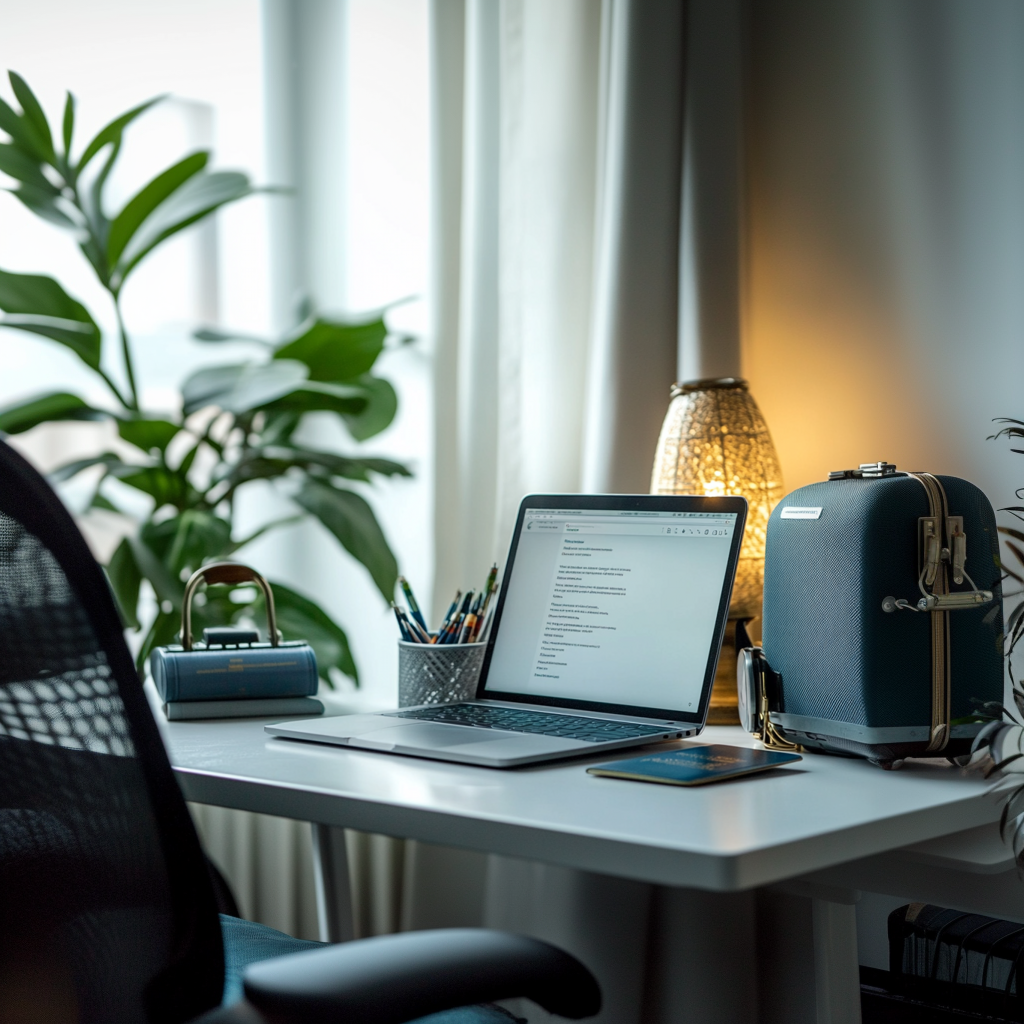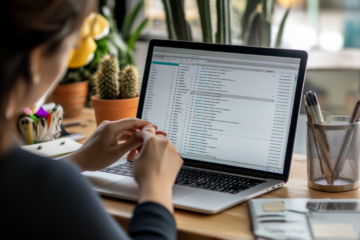Imagine this: At last, you’re leaving for that much-needed getaway. You’ve prepared your auto-responder, packed your suitcase, and are ready to enjoy the sunshine carefree. However, did you truly consider your out-of-office response? Or did you simply type, “I’m going away. I’ll respond later,” and call it a day?
There’s more to an out-of-office reply than just being polite. These messages act as your virtual spokesperson while you’re away. A well-written message prevents misunderstandings, sets clear boundaries, and guarantees that your partners, clients, and coworkers know what to expect. And let’s face it—it feels pretty good to get it right.
In this post, we’ll look at how to craft a professional yet unique out-of-office message. Along the way, you’ll learn how to set expectations, communicate clearly, and perhaps even have a little fun.
Essential Components of a Successful Out-of-Office Response
Even when you’re enjoying piña coladas on the beach, an out-of-office reply is about communicating effectively and remaining professional—not just announcing your absence. Here are the key components every great out-of-office message needs:
Clarity: Indicate the precise dates of your trip and your expected return time. Steer clear of ambiguous phrases like “back soon” or “out for a bit.” Accuracy keeps everyone informed and helps manage expectations.
Tone: Your tone should reflect your professional brand. A legal professional, for instance, might prefer formality, but a marketing creative might inject some humor. Just make sure it fits your audience and role.
Alternative Contacts: Assign senders to a coworker who can take care of pressing issues while you’re away. Provide their name, phone number, or email address—just make sure they’re ready to help!
Boundaries: Clearly state whether you will have limited or no email access. Unnecessary follow-ups can be avoided by using phrases like, “I will not be checking emails during this time.”
Master these fundamentals, and you’re well on your way to out-of-office success.
Detailed Instructions for Well-Known Email Platforms
Now that you know what makes an effective out-of-office reply, let’s talk about execution. Every email platform has special features that make it easy to set up your message. Here’s how to accomplish it:
Gmail:
1. To access Settings, open Gmail and click the gear icon in the upper-right corner.
2. Select the Vacation Responder section by scrolling down from the General tab.
3. Select your start and end dates and activate the responder.
4. Type your message in the designated field. Add your essential components: boundaries, alternate contacts, and clarity.
5. Save modifications. During the designated period, your out-of-office message will automatically go live.
Outlook:
1. Go to File > Automatic Replies (Out of Office) in Outlook.
2. After choosing to send responses automatically, enter the time frame you want.
3. Write your response. Use Outlook’s formatting features to ensure that your message is professional and understandable.
4. Consider crafting distinct communications for internal and external contacts, modifying the content and tone as necessary.
5. After selecting OK, you’re ready to go.
Yahoo:
1. Click the Settings Gear after logging into Yahoo Mail, then choose More Settings.
2. Toggle the feature to activate Vacation Response.
3. Compose your message, adding pertinent information and the dates you will be away.
4. After setting start and end dates, save your modifications.
Use the user-friendly tools on each platform to streamline the process and maintain a professional appearance even when you’re offline.
Expert Advice for Creating the Ideal Message
Composing an out-of-office reply is a chance to demonstrate professionalism and even a little personality in addition to being functional. To make sure your message stands out for the right reasons, follow these tips:
Keep It Brief and Clear: Although it may be tempting to add some flair, avoid overwhelming the reader with too much information. Keep it simple: who to call in your absence, when you’ll be returning, and when you’re going to be out.
Don’t Give Too Much Away: No one needs to know your Hawaiian vacation schedule or that you’ll be celebrating Aunt Susan’s 80th birthday. Keep it professional and relevant.
Use a Friendly Yet Professional Tone: Striking the ideal balance is essential. For example:
“Thank you for your email! I’m currently out of the office and will return on [date]. For urgent matters, please contact [alternative contact]. I’ll respond to your message as soon as I can after my return.”
Add Personality in Moderation (If Appropriate): Adding a little humor or originality to your message can make it more engaging if your company culture permits it. For instance:
“Hi! I’m probably losing at beach volleyball right now and not in the office. I’ll get back to you as soon as I return on [date]. For urgent matters, contact [name].”
Test It: Send a test email to a coworker or yourself before you hit save. This guarantees that your message will appear and read as intended.
By keeping these pointers in mind, you can confidently leave your inbox and make an impression that lasts.
Vacation Mode with Technology
While it may seem impossible to stay disconnected while on vacation, technology can actually strengthen your boundaries. Here’s how to use modern tools to put work on hold while you rest:
Email Snooze Features: Many email platforms, including Outlook and Gmail, now offer snooze options. This feature temporarily hides emails from your inbox until you’re ready to address them, reducing the temptation to “just check in.”
Notification Management: You can personalize notifications for particular apps on both Android and iPhone devices. For the duration of your vacation, set quiet hours or completely disable email notifications.
Setting Up Your Mobile Out-of-Office Reminder: On the go and realize you haven’t set up your out-of-office response? No problem. Most email apps let you activate and modify autoresponders directly from your mobile device.
Inbox Management Tools: Some platforms, such as Outlook’s Focused Inbox or Gmail’s Priority Inbox, offer auto-sorting capabilities. This ensures only the most important emails are waiting for you when you return.
Auto-Delete or Archive: While you’re away, consider turning on auto-archive for promotional or low-priority emails. This keeps your inbox tidy and manageable when you return.
The Great Debate: Is It Better to Peek or Not?
While on vacation, the temptation to glance at your work emails is real. After all, “it’s just one email.” However, that one email can easily snowball into hours of unforeseen work, undermining your entire vacation. Here’s how to resist the urge and make the most of your break:
Establish Clear Boundaries: Indicate in your out-of-office reply if you choose to remain totally disconnected. Inform people you won’t be checking emails and provide an alternative contact in case of emergencies.
Plan “Peek” Times: If staying completely offline isn’t feasible, set aside specific times to check emails briefly. For instance, limit it to 10 to 15 minutes once a day. This allows you to stay informed without consuming your vacation.
Keep Work and Personal Accounts Separate: Turn off notifications for your work email if you use the same device for both. This ensures you won’t become distracted while idly browsing personal messages.
Ask Yourself: “Is It Worth It?” Consider whether checking that email will add value or just create stress before you peek. Most non-urgent matters can wait until you return to work.
Finally, Getting the Hang of the Out-of-Office Reply
Creating the ideal out-of-office response is an art form that sets the tone for your trip. By combining professionalism, clarity, and the right amount of personality, you can ensure your absence is handled well while preserving good relationships with clients and coworkers.
Use tools offered by platforms like Gmail, Outlook, and Yahoo to make setup quick and simple. Create a message that establishes boundaries while keeping things friendly. Most importantly, allow yourself to fully unplug and relish your vacation—you deserve it!
So, the next time you’re preparing to leave, take a few extra minutes to perfect your out-of-office reply. It’s the little things that guarantee both your inbox and your mind remain stress-free.





